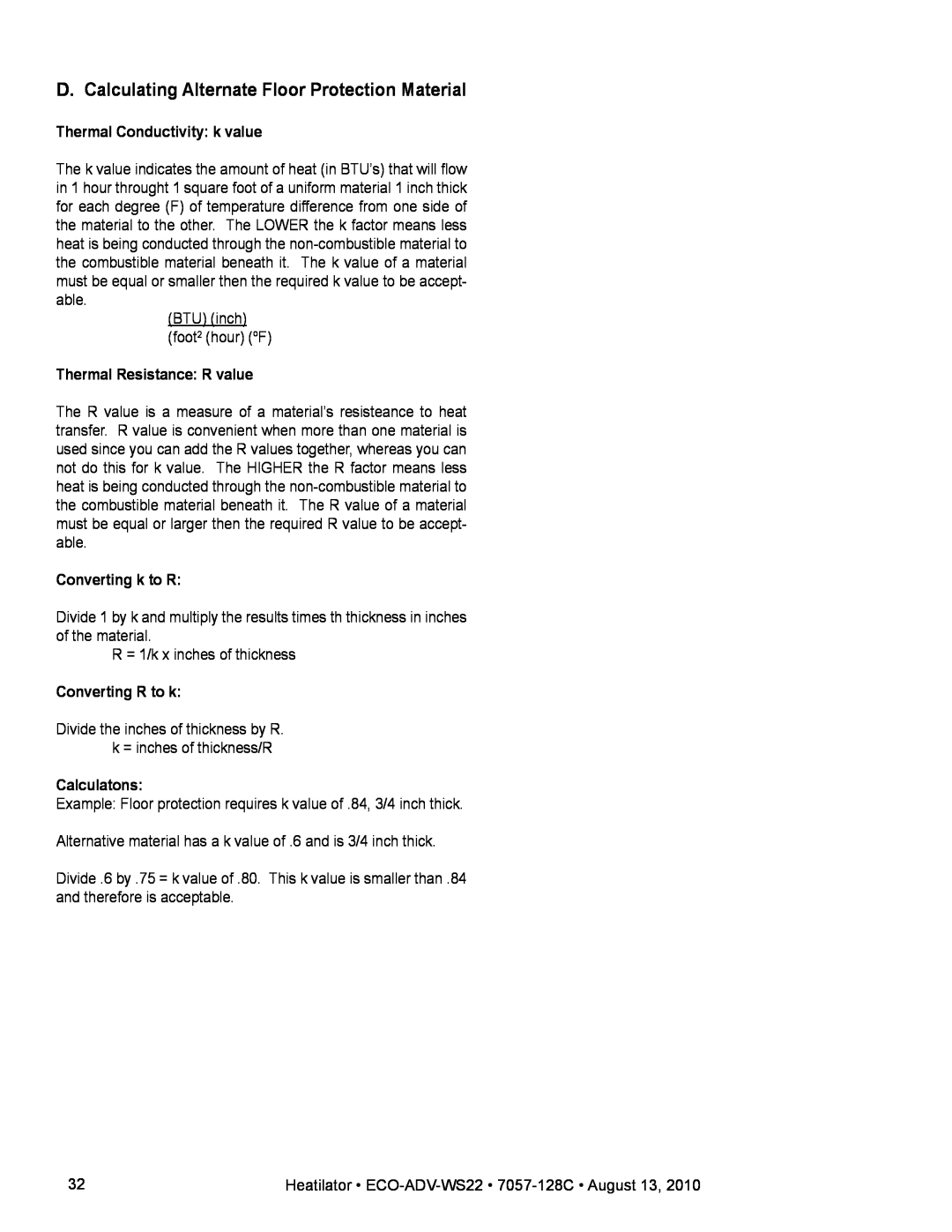D. Calculating Alternate Floor Protection Material
Thermal Conductivity: k value
The k value indicates the amount of heat (in BTU’s) that will flow in 1 hour throught 1 square foot of a uniform material 1 inch thick for each degree (F) of temperature difference from one side of the material to the other. The LOWER the k factor means less heat is being conducted through the
(BTU) (inch) (foot2 (hour) (oF)
Thermal Resistance: R value
The R value is a measure of a material’s resisteance to heat transfer. R value is convenient when more than one material is used since you can add the R values together, whereas you can not do this for k value. The HIGHER the R factor means less heat is being conducted through the
Converting k to R:
Divide 1 by k and multiply the results times th thickness in inches of the material.
R = 1/k x inches of thickness
Converting R to k:
Divide the inches of thickness by R. k = inches of thickness/R
Calculatons:
Example: Floor protection requires k value of .84, 3/4 inch thick.
Alternative material has a k value of .6 and is 3/4 inch thick.
Divide .6 by .75 = k value of .80. This k value is smaller than .84 and therefore is acceptable.
32 | Heatilator • |
